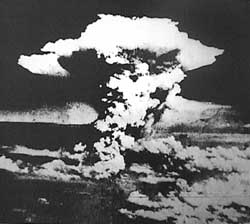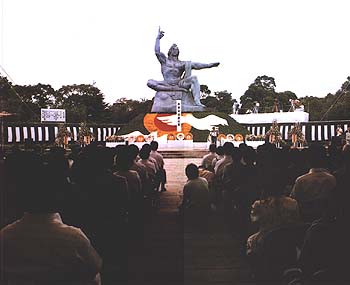Since gasoline prices world wide range from 12$$ in Oslo to .36$$ in Venezuala then obviously the oil markets are being manipulated. For one thing oil sales prices are never ever challenged. Producers get to charge what ever they want to. But so do shippers and refiners. In one of the weirdest markets on the planet, liquid fuel markets in general get to charge more than the market can actually bear or is that bare. Geniuses like Dave Sykuta at the Illinois Petroleum Council try to turn this into a negative.
http://www.sj-r.com April 17
** The third factor in gas prices is about making the fuel. Price-wise, Springfield is fortunate not to have to sell special low-polluting fuels as Chicago and St. Louis do. They’re the world’s cleanest fuels but much more expensive. We have too many special fuel requirements, a gridlocking 45 or so required nationwide in the summer.
Since the 1990s, the oil industry has increased refinery capacity about 15 percent. Numerous Illinois expansions are planned but move slowly through a rocky political process where the same politicians and others who demand infrastructure expansions on Monday and Tuesday, oppose them on Wednesday and Thursday. NIMBY and lately BANANA (build absolutely nothing anywhere near anything) are factors in higher prices and uncertain supply. They’re self-imposed problems that reasonable people should be able to solve.
:}
And they have been shoveling this hoo haw for the past 20 years when in fact the Oil Companies have constrained capacity by at least 15% to increase profits. This naked price manipulation has never been challenged by regulators. Instead for the same 20 years politicians have consistently dragged Big Rich Oil Executives before a congressional committee as they did today and to DEMAND that prices come down. Heck they don’t even swear them in any more because they know they are lieing. This from 2001:
http://wyden.senate.gov/issues/wyden_oil_report.pdf
The Oil Industry, Gas Supply and Refinery Capacity: More Than Meets the Eye
An investigative report presented
by Senator Ron Wyden
June 14, 2001
“As observed over the last few years and as projected well into the future, the most critical factor facing the refining industry on the West Coast is the surplus refining capacity, and the surplus gasoline production capacity. The same situation exists for the entire U.S. refining industry. Supply significantly exceeds demand year-round. This results in very poor refinery margins, and very poor refinery financial results. Significant events need to occur to assist in reducing supplies and/or increasing the demand for gasoline. “
Internal Texaco document, March 7, 1996
“A senior energy analyst at the recent API (American Petroleum Institute) convention warned that if the U.S. petroleum industry doesn ‘t reduce its refining capacity, it will never see any substantial increase in refining margins…However, refining utilization has been rising, sustaining high levels of operations, thereby keeping prices low. “
Internal Chevron document, November 30, 1995
America is indeed facing an energy crunch. For much of the year, gas prices have soared and supply has trailed demand.
During the course of my ongoing investigation into potential anti-competitive and anti-consumer practices by the oil industry, I have obtained documents that raise serious questions about the circumstances leading to limited gas supply and high prices.
The oil industry and its allies would have the public believe that insufficient refining capacity, restrictive environmental standards, growing gasoline demand and OPEC production cutbacks are the primary reasons for the current oil and gas supply problem.
However, the record shows – supported by documents I have obtained – that there is more to the story. Specifically, the documents suggest that major oil companies pursued efforts to curtail refinery capacity as a strategy for improving profit margins; that competing oil companies worked together to subvert supply; that refinery closures inhibited supply; and that oil companies are reaping record profits, yet may benefit from a proposed national energy policy that would offer financial incentives to expand refinery capacity.
:}
If you think this is just liberal ideology blowing environmental smoke, read this from the National (frickin) Review:
http://www.nationalreview.com/nrof_comment/taylor_van_doren200506030857.asp
June 03, 2005, 8:57 a.m.
High Pump-Price Fairy Tales
Blame global supply-and-demand realities — not the enviro-whackos.
By Jerry Taylor & Peter Van Doren
So what’s driving these high gasoline prices, which now average $2.22 across the country? Conservatives think it’s largely a function of the chickens coming home to roost. In short, bureaucratic red tape, anti-growth environmental extremists, and “not-in-my-back-yard” community activists have long prevented new oil refineries from coming online. This in turn has starved the market of the gasoline and — voila! — record prices are the logical result.
It’s a convenient story line for the Right. Unfortunately, the narrative is wrong.
How can that be, you might ask, when we’re constantly beaten around the head with the fact that no new oil-refining plants have been built in the U.S. since 1976? The reason that no new facilities have been built is partly because it costs far less to expand production capacity at existing plants than it does to expand capacity by building new plants. And because existing refineries are ideally situated near oil terminals and pipelines, it’s more convenient to increase capacity in those locations than to do so elsewhere.
But if that’s so, how do we explain the facility shutdowns that have characterized the industry? After all, there were 325 oil refineries in the U.S. in 1981, but only 149 remain today. The explanation resides in the fact that we had a lot of refineries back in 1981 not because of market forces or the lack of environmental regulations, but because the government subsidized the existence of small, inefficient refineries.
Here’s how it worked. Under the Mandatory Oil Import Quota Program (which was in effect from 1959 to 1973), low-cost crude oil imports were restricted to support the domestic crude price. Refineries got disproportionately more rights to import if they were small. The subsidies to small refineries continued under the price-control programs in place from 1973 through 1980. When the subsidies ended, a large number of inefficient small refineries bit the dust.
That helps explain why domestic refining capacity dropped from 18.6 million barrels of oil a day in 1976 to 16.8 million barrels of oil today. Dramatic improvements in the operational efficiency of oil refineries also contributed to that decline. Refineries now operate much closer to their capacity than 20 years ago. Accordingly, less “nameplate capacity” is necessary to meet demand.
The upshot is that even though domestic refineries have been shutting down and total refining capacity has been declining, domestic gasoline production has actually increased by 20 percent since the last oil refinery was built in 1976.
But even that figure only tells part of the story. Gasoline markets today are increasingly global rather than regional in nature. For example, European governments tax diesel fuels less than gasoline and European motorists have responded by using diesel. Accordingly, European refineries make more gasoline than they can use and it’s cheaper for us to import that gasoline than to produce it here at home.
The increase in gasoline imports since 1976 (from 2 percent of the market then, to 5.8 percent now) is often cited as evidence that “we have a problem.” Nonsense. International trade is a good thing. The more globalized the market, the more diversified our supply and the less vulnerable the U.S. market is to disruption. Moreover, the more global the market, the greater the competition. How much domestic refining capability we have is increasingly less important than the amount of international refining capacity we can access.
It is true that there is a little slack in production capacity at the moment. Why don’t we have more production capacity? Because profit margins in the refining business have traditionally been rather meager. The gasoline refining market is about as close to the model of “perfect competition” as you’re going to find outside of an economics textbook. Rents are competed away and little profit is left for producers, especially when compared to the profits available from investment in oil production.
Conservatives believe that environmental regulations have a lot to do with those low profits. They’re wrong. A large oil refinery costs $4 billion to $6 billion to build. The installation of “best available control technology” is a very small part of that figure.
Accordingly, President Bush’s proposals to provide low-cost real estate in the boonies and to somewhat reduce plant costs through regulatory improvements simply won’t result in any new refining capacity. We’d love to blame big government and enviro-whackos for today’s high gasoline prices (we do, after all, work for the Cato Institute). But telling fairy tales about the market does no one any favors. Prices are high because of global supply-and-demand factors, and Congress can do little about it.
— Jerry Taylor is director of natural-resource studies at the Cato Institute in Washington, D.C. Peter Van Doren is editor of Cato’s Regulation magazine.
:}
So why did the State Journal Register give this guy a Guest OP ED Piece. Lack of investigative reporting maybe?












